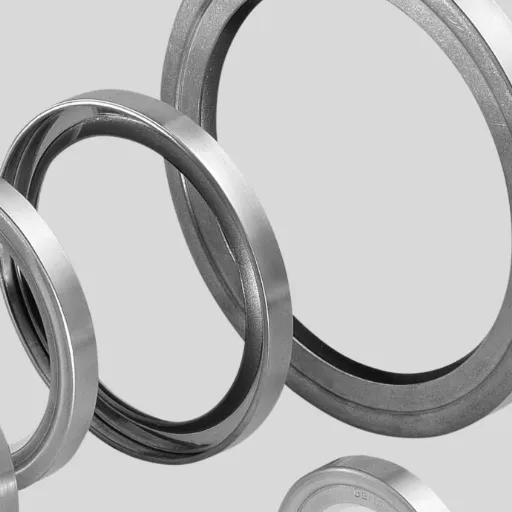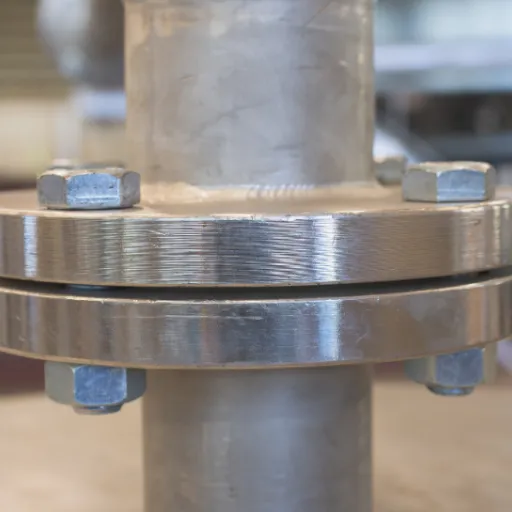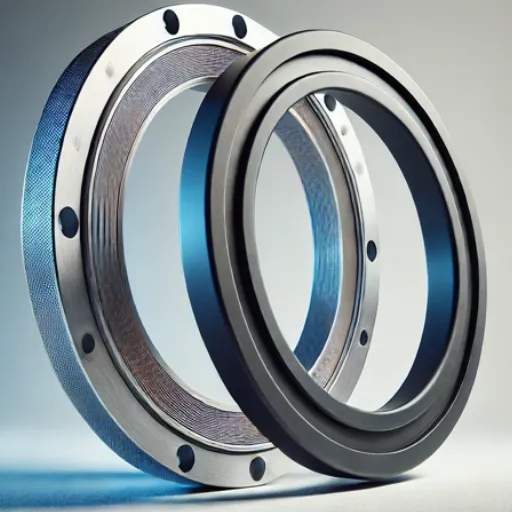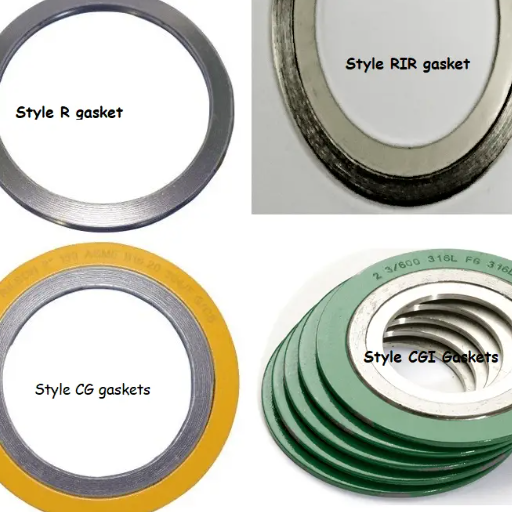What are the different types of welded flanges? Welded flanges have an immensely useful application in numerous different industrial operations wherein they provide pipes, valves, pumps, and other equipment with sturdy attachments that they may function as efficient and secure systems. A clear understanding of the various kinds establishes whether you will be able to choose the most appropriate welded flanges for your application to warranties long-term performance and safety. This article breaks down the types of welded flanges according to their specifications, applications, and benefits. If you’re a professional or beginner in this field, then this article will give you all the answers you are seeking about these basic elements relevant to the sector. Continue reading to delve into the intriguing subject of welded flanges and learn how they form strong industrial linkages.
Understanding Flanges

Flanges are important components in connecting pipes, valves, pumps, and other equipment in piping systems. They provide a more secure way of joining and separating an assembly for ease of maintenance and inspection. Flanges usually consist of either a flat ring or a flat plate with holes through which bolts can be inserted to form a tight, leak-free seal; alternatively, they may be welded. The materials commonly used are stainless steel, carbon steel, and alloys-checking against the particular system requirements such as pressure and temperature ratings. Because of their value in strength and versatility, flanges are well recognized in industries related to oil and gas, power generation, and manufacturing.
Definition and Purpose of a Flange
A flange joins pipes, valves, pumps, and other equipment in piping systems, facilitating the free flow of fluids or gases. It acts as a mechanical joint that can be quickly assembled or disassembled to allow maintenance, cleaning, or inspection. Properly machined means creating a flange that ensures a leak-tight seal when bolted, welded, or threaded, frequently with the assistance of gaskets or some other form of sealing medium.
If the flange is meant for structural connectivity, then it offers structural integrity, stability, accommodation for a broad range of piping systems; recent search trends bring out the orientation of modern industrial operations toward flanges that satisfy environmental and safety regulations, high-pressure-high-temperature applications, like energy production and chemical processing. This further incorporates advanced materials such as duplex stainless steel and superalloys that guarantee enhanced durability and resistance to corrosion.
Importance of Flanges in Piping Systems
Flanges bear great importance in piping systems as they act as connectors that allow assembly with ease yet lend reliability in a multivariate form to complex industrial operations. flanges used in eco-friendly and safety-conscious applications have been experiencing high demand. Industries are stressing on flanges that withstand extreme conditions such as high-pressure or high-temperature surroundings, apart from now adhering to stringent compliance standards.
The data endorse that materials like duplex stainless steel and superalloys are increasingly preferred owing to their exceptional strength, life span, and corrosion resistance. Duplex stainless steel flanges, as an example, provide twice the strength in comparison with conventional austenitic stainless steels, thereby justifying their use in highly demanding applications, especially offshore drilling and energy production. Superalloy-based flanges, on the other hand, are more suited for applications in chemical and petrochemical processing since they retain integrity under thermal stress and corrosive environments.
Flanges are a huge factor in processes of maintenance and alterations, too. Because of bolted connections, flanges could be disconnected and pipe sections could be reassembled without incurring significant downtime, thereby ensuring continued operational status. With sustainability front and center, the manufacturers are now pushing forward in designing technologies for flanges optimized both for performance and for reduced energy consumption in manufacturing. This marriage of innovation and utility showcases why these flanges continue to enjoy great significance in piping systems.
Common Types of Flanges Used in Piping
When it comes to the commonly used types of flanges in piping, I would single out a few for consideration. First and foremost comes the weld neck flange, which is known for great strength, hence suitable for high-pressure or high-temperature environments. Finally, there is the slip-on flange, which is easy to install and best suited for low-pressure applications. A blind flange is used to close off piping systems. Socket weld flanges provide strong connections for small-diameter high-pressure pipes. Threaded flanges, on the other hand, lend great utility when welding is not appropriate for the job-they are more versatile for certain specific applications. These options combine well to meet the requirements of piping systems.
Types of Flanges

|
Type |
Pressure |
Weld Type |
Use Case |
Key Feature |
|---|---|---|---|---|
|
Weld Neck |
High |
Butt Weld |
High-pressure |
Stress-resistant |
|
Slip-On |
Low |
Fillet Weld |
Low-cost assembly |
Easy installation |
|
Socket Weld |
Medium |
Fillet Weld |
Small pipes |
High fatigue strength |
|
Lap Joint |
Low |
None |
Frequent dismantling |
Reusable |
|
Threaded |
Low |
None |
No welding needed |
Screw-on design |
|
Blind |
Very High |
None |
Sealing ends |
No bore |
Weld Neck Flange: Characteristics and Applications
In general, a weld neck flange is considered for its robust integrity and resistance to high-pressure and temperature scenarios. The defining characteristic is a tapered hub, which smoothly transitions the stress from the flange to the pipe, allowing for a secure connection in severe applications. Some of the applications in which these flanges find their use include the oil and gas industry, chemical processing, and power generation, where it is a matter of safety and durability.
Weld neck flanges are often recommended for systems carrying corrosive or high-temperature fluids due to their erosion- and turbulence-mitigating abilities inside the pipeline. Based on more recent data, this type of flange is chosen for projects where there is a necessity of improved structural integrity, such as offshore drilling platforms or high-pressure steam lines. With an ability for a secure, leak-proof seal, weld neck flanges are considered most efficient in applications that need a high degree of performance and service life.
Slip-On Flange: Features and Benefits
Slip-on flanges are versatile and cost-efficient products great for lower-pressure applications. From my experience, they are almost the easiest ones to install. One simply slides them over the pipe, and they are welded in two places. These flanges are quite popular in piping systems where dismantling is not often required, and the moderate strength rating suits a non-critical piping activity. Their cheap price wakes up the ease of installation and makes them a practical option for many piping systems.
Socket Weld Flange: Usage and Installation
Socket weld flanges are specifically designed for small-diameter, high-pressure pipelines and are widely recognized for their reliability and durability. Socket weld flanges are installed by inserting the pipe into the socket, and then the top of the flange is fillet welded to the pipe, creating a very strong and leak-resistant joint. These socket weld flanges are very well suited for applications where fatigue and structural integrity are paramount, such as hydraulic systems, chemical processing plants, and oil and gas pipelines.
According to the latest data, socket weld flanges are preferred as they help to minimize the stress concentrations in the weld joints and thus result in better performance in demanding environments. Moreover, it has a naturally smooth bore that matches with pipe ID for uninterrupted flow and less turbulent flow at the interface in the system. Though its installation requires precision welding operations to maintain its secure sealing, socket weld flanges are nonetheless the best choice where higher pressure containment and steady performance are required by an operation.
Specific Flange Types
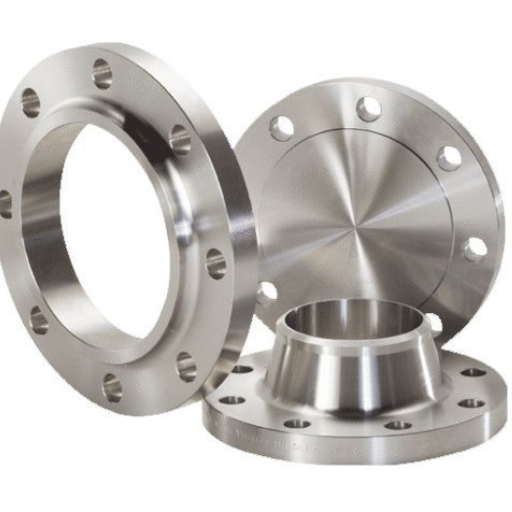
Weld Neck Flanges
Weld neck flanges have the characteristic long tapering hub that ensures good stress distribution and makes the flange suitable for high-pressure and high-temperature conditions. They are welded to the pipe, creating a sturdy, leak-proof joint and are mostly used in critical applications, such as oil and gas pipelines or chemical processing systems. The tapering action reduces stress concentration on the flange, thereby contributing to its longevity where there are changes in stresses.
Slip-On Flanges
The slip-on flange slips onto a pipe and then is welded in place. They are simple to install and best for low-pressure applications where alignment is not important. Since the design is simpler than weld neck flanges, the slip-on type is less costly and is usually found being used for systems of moderate pressure and temperature requirements.
Blind Flanges
Blind flanges are solid plates used to shut off the ends of piping systems or openings of vessels. These are critical for maintenance because they enable different sections of a system to be isolated while providing a strong, secure sealing through which blind flanges are versatile enough to accommodate both low-and high-pressure applications.
Socket Weld Flanges
Socket weld flanges have a recessed area where the pipe is inserted before being welded over the top, allowing for smooth inner flow without turbulence. They are generally for small-diameter, high-pressure systems that require strong sealing and structural integrity.
Threaded Flanges
Threaded flanges are meant to be screwed onto pipes that have a threaded end, hence the necessity for welding is avoided. For low-pressure and non-critical applications, these also allow for ease since there would be instances when the system would need to be maintained or taken apart.
Lap Joint Flanges
Lap joint flanges are used with a stub end and are best wherever the system is often disassembled for inspection or cleaning. They are fairly versatile and allow for adjustment of the alignment in low-pressure applications.
General Considerations
Each flange type fulfills certain functions according to pressure ratings, temperature, ease of installation, etc. Choosing the right flange makes for system effectiveness and reliability and should therefore be considered in terms of operational demands and long-run implications.
Blind Flange: When and Why to Use
A blind flange is a very significant entity in any piping system with its flow direction sealing capability at one or more ends of pipes-against valves or equipment. Most essentially, it’s needed in situations in which a system must be terminated or temporarily closed. The reasons could be for maintenance and testing or expansion of the system. The absence of any kind of bore through the central part differentiates blind flanges from other types of flanges, making them able to block flow totally.
These flanges find use in any system under the utmost pressure. It is found that the oil and gas industry, along with the petrochemical and generation industries, largely utilizes blind flanges. They handle blistering or freezing pressures and temperatures while sealing with a high degree of assurance. Besides, they allow inspection and cleaning without interrupting the process in the line. The bare-bone design combined with highly durable materials, ranging from stainless steel to carbon steel, ensures they retain a heavy demand across high-end infrastructure.
Threaded Flange: Advantages and Limitations
Threaded flanges present some versatility for those applications where welding is either inconvenient or undesirable. One major advantage is their quick installation and removal. These flanges screw onto the pipe rather than being welded, thus assembly and disassembly can be done quickly, thereby easing maintenance and inspection. This makes them good for systems exposed to lower pressures and average temperatures, or working in hazardous environments where welding would be unsafe.
That said, however, the thread flange has some limitations. For one, it limits its applications to smaller pipe sizes, whereas larger diameters call for more secure fastening mechanisms. Moreover, large-scale pressure, very high temperatures, or even cyclic loadings are usually undesirable for use with such systems, so that a potentially hazardous compromise on threaded connections could lead to leakage or full-blown failure of the system. Despite these limitations, threaded flanges remain a viable solution in specialized scenarios, mainly in areas such as plumbing, low-pressure piping, and non-critical chemical processing systems. Keeping simple and versatile, they remain a major cornerstone for various piping applications.
Lap Joint Flange: Design and Functionality
Lap joint flanges are designed to be used with stub ends, with the flange free to rotate about the pipe. This separate design provides great flexibility during alignment and installation. Useful where systems require frequent disassembly or installation and space restricts precision alignment. Usually, on applications of low pressure and non-critical systems, due to the fact that their strength is somewhat dependent on the stub end. But their use to economize on material is important enough to outweigh this drawback in many industries since the flange may be fabricated from lower-grade materials, whilst the more expensive material can be confined to the stub end.
Welding Techniques for Flanges

Welding flanges requires a lot of precision to ensure durability and leak-tight connections. The following are some of the most commonly used methods:
Butt Welding – This weld is used to weld flanges to pipes, wherein the ends are prepared and aligned before being welded. The weld creates strong joints suitable for high-pressure systems.
Socket Weld – This is a better weld for smaller pipes because welding is done by inserting a pipe into a recess in the flange. It offers a smooth internal surface, decreasing the chances of flow restriction.
Tack Welding – It is used to hold flanges in place temporarily to allow them to be aligned until the actual weld is finished.
The welding technique should be selected in consideration of the service conditions to ensure the integrity of the connection.
Butt Weld vs. Fillet Weld: Key Differences
A butt weld differs from a fillet weld in application, design, and structural purpose. A butt weld joins two pieces of metal along the same plane so that their joint will be flush and smooth. These kinds of welds are great for high-pressure systems and provide greater strength due to complete penetration and are, therefore, highly used in oil, gas, and pipeline industries. Butt welding, in general, requires the prepared edges of materials to be fine-tuned for a sleek and highly durable weld connection.
From another perspective, the fillet weld welds metals, joining them at an angle in a T-joint or lap joint. This weld is faster and easier to apply than the butt weld, practically requiring little preparation. The application of fillet welds is for structural work where outright precision is not as stringent, such as reinforcing beams or brackets. Sometimes they might fall short of the strength that butt welds provide within a certain high-stress environment, yet their simple nature allows them to be versatile in cost-effective applications.
Choosing between a butt weld or a fillet weld will always be determined by the needs of the specific project: load-bearing capabilities, environmental conditions, and cost considerations. Current trends suggest that butt welds are still applied for critical connections, whereas a fillet weld can take over for regular structural applications.
Welding Standards: ASME Guidelines
American Society of Mechanical Engineers (ASME) sets guidelines for welding procedures, thereby ensuring safety, quality, and uniformity across a multitude of processes, including construction, manufacturing, and energy industries. The American Society of Mechanical Engineers (ASME) Boiler and Pressure Vessel Code (BPVC), particularly Section IX, sets forth welding and brazing qualification requirements to ensure that the fabrication will safely bear service stresses. These guidelines lay emphasis on aspects ranging from welders’ qualifications to the approval of welding procedures, as well as the scrutiny of weldments through rigid non-destructive testing methods.
Data from recent years point out that by complying with ASME standards, there is a direct reflection not just on the safe working practices but also on the operational life and efficiency. For instance, the ASME standards address crucial deficiencies in procedures or skills that could otherwise lead to weld failures. Industries witnessing newer growth venues in renewable energy and advanced materials manufacturing are increasingly leveraging welding techniques that comply with the ASME. To best negotiate today’s welding advances, best practices are found in the ASME BPVC.
Best Practices for Flange Welding
The following outline offers some of the best practices that should be observed in flange welding to ensure successful and reliable welds. Proper alignment of the flange and pipe is vital to prevent the concentration of stresses that may cause failure. Welding procedure specifications (WPS) per ASME standards should always be followed to assure uniformity of quality. Preheat may be applied depending on the material to prevent cracking to some extent, also post-weld heat treatment (PWHT) will help in improving life of the weld. Surfaces must be free from oil, grease, rust, or any contaminants before welding to ensure weld integrity. Regular inspections and quality checks will help detect any problems at an early stage so that they will be addressed before finalization. By observing these simple practices, welders will ensure that their flange welds are safe, efficient, and conform to the code.
Conclusion

In sum, adherence to welding procedures to prevent failure is necessary for reliability. It’s my personal opinion that the ASME BPVC is an indispensable discipline that one may turn to for handling the intricacies of modern welding application strategies of industries where they innovate and concern themselves with structural integrity. It is looked upon as an authority on implementing good engineering and high standards.
Summary of Common Flange Types
Flanges are important components of a piping system, giving connectivity, structural integrity, and ease of maintenance. Common flanges include:
Weld Neck Flanges – Known for conical and extended neck geometry that efficiently transmits stresses, these flanges are usually specified for high-pressure or high-temperature applications.
Slip-On Flanges – Designed to slip over the pipe, they are simple to install and align, usually specified for low-pressure systems where welding requirements are minimal.
Socket Weld Flanges – These flanges have a recessed bored socket in which the pipe is inserted, and are useful for small-bore pipe applications so that it can give a good and leak-proof joint.
Blind Flanges – These are used to close or seal the end of a pipe and are useful in systems that may require further expansion or pressure testing later on.
Threaded Flanges – These are used in low-pressure applications and are connected by screwing onto the pipe with no welding involved, thus maintaining flexibility for systems that require quick assembly or disassembly.
Lap Joint Flanges- When used with stub ends, they provide versatility and are usually utilized where frequent dismantling is necessary.
Knowing the differences and usage of these types of flanges can help make a proper selection, thus providing better safety and efficiency in industrial systems. With up-to-date engineering insight combined with web search trends and spurring interest, these flanges stay at the heart of infrastructure and new innovations.
Future Trends in Flange Design
Some of the developments in flange design are evolving in response to the growing requirements for greater efficiency, sustainability, and adaptability. Some of the future trends will likely focus on the usage of innovative materials like composites and high-performance alloys to provide strength while maintaining lightness. Intelligent designs keep the flanges equipped with sensors for real-time monitoring of pressure, temperature, and/or potential leakages from an operational perspective for enhanced safety. Also, 3D printing and additive manufacturing are changing the flange production by permitting customized designs and rapid prototyping. This is a reinforcement of how the industry is heading towards smart, resilient, and environmentally aware solutions.
Final Thoughts on Flanges in Piping Systems
Flanges hold significance in piping systems, playing a vital function in ensuring tight connections, sustaining system integrity, and facilitating maintenance. Advances in materials and technologies, including corrosion-resistant alloys and smart flanges with integrated sensors, speak to the industry’s commitment towards safety, efficiency, and sustainability. The advent of 3D printing will allow for more customization and faster production, thus hastening the manufacturing process. As the demand for infrastructure rises, the further evolution of flange design and functionality will certainly be necessary to accommodate the changing requirements of modern piping systems.
References
-
Michigan State University – Welding Overview
welding.pdf
This document provides an academic overview of various welding types, including flange welding. -
University of Central Florida – High Pressure Flange Design
High Pressure Flange Design
A research report summarizing flange design techniques and considerations. -
University of Michigan – Visual Encyclopedia of Chemical Engineering
Pipes – Visual Encyclopedia
This source explains the five basic types of flanges, including welded ones. - Top Socket Weld Flanges Suppliers in China
Frequently Asked Questions (FAQ)
What is a flange and what are the different types of flanges?
A flange is a type of mechanical component that is used to connect pipes, valves, and other equipment in a piping system. The different types of flanges include weld neck flanges, slip-on flanges, blind flanges, and threaded flanges. Each type of flange serves specific functions and is suitable for various applications. For instance, weld neck flanges are often used in high-pressure applications due to their strong connection. Slip-on flanges, on the other hand, are easier to install and are commonly used in low-pressure systems. Understanding these various types of flanges is crucial when choosing the right flange for your piping system.
What are the characteristics of a weld neck flange?
A weld neck flange is characterized by its long tapered neck, which provides a smooth transition for the pipe. This design minimizes stress concentration and is suitable for high-pressure and temperature applications. The flange face and the bore of the flange align perfectly with the pipe, ensuring a strong welded connection. Weld neck flanges are typically made from carbon steel or stainless steel and are used in critical applications where the integrity of the connection is paramount. They are widely regarded as one of the most reliable flange types for demanding environments.
What is a lap joint flange and how is it different from other flange types?
A lap joint flange is typically used in applications where frequent disassembly is required. Unlike other flange types, it consists of a loose backing flange and a stub end, allowing for easy alignment and adjustment. This design makes it suitable for use in systems that need to be regularly serviced. The lap joint flange is particularly useful in piping systems with large diameters and is often paired with a stub end, which is welded to the pipe. The flexibility of the lap joint flange sets it apart from rigid flanges like the weld neck flange.
How does a blind flange function in a piping system?
A blind flange is used to blank off the end of a piping system, effectively sealing it. This type of flange is essential for maintenance purposes or when a section of the pipe is not in use. Blind flanges are designed to withstand high pressure and are commonly found in various applications, including oil and gas industries. They can be manufactured from different materials, including carbon steel and stainless steel, to suit different applications. The versatility of blind flanges allows for secure connections and easy modifications in existing pipe systems.
What is the purpose of a threaded flange?
A threaded flange is a type of flange that features internal threads, allowing it to be screwed onto a pipe. This design simplifies the installation process and is particularly useful in applications where welding is not feasible. Threaded flanges are often used in low-pressure applications and can be made from materials like stainless steel or carbon steel. They are ideal in environments where frequent disassembly is expected, as the threaded connection allows for quick removal. However, it’s important to consider the pressure ratings and the type of fluid being transported when using threaded flanges in a piping system.
What are socket weld flanges and how do they differ from other flange types?
Socket weld flanges are used in small-size and high-pressure piping applications. They are designed to be welded to the pipe, with the pipe inserted into a socket at the bottom of the flange. This provides a strong and durable connection while minimizing the risk of leaks. Unlike slip-on flanges, which are placed over the pipe, socket weld flanges provide a more secure joint. They are commonly used in stainless steel pipe systems and applications where the fluid is at high temperatures. Understanding the differences between socket weld flanges and other types of flanges is essential for choosing the most suitable option for your project.

